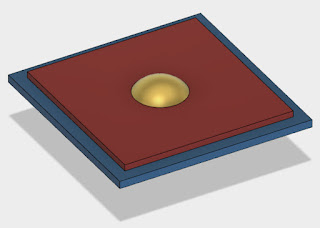It would look similar to this mobile pipe rack found on the McMaster Carr Website
But naturally, the store bought version doesn't quite meet my needs. Murphy's Law wouldn't allow that! So that leaves me in the position of designing and building one.
 |
| Here's one side of the rack, mostly done, |
And seeing how I don't want to work on it evening upon evening, that means I have to take advantage of every step I can to increase the efficiency my design time.
Now I should mention that many of these steps I've shared before, so this will be a link back to these posts. But I think it's a good example of how these processes can come together and become greater than the sum of their parts.
Here are the tips!
1) Don't Create a Model if You Don't Have to!
The rack needs to be mobile, so it needs to rest on casters. Fortunately, Fusion 360 has a link to the McMaster Carr website that lets you insert models from their website into your design. The part number is included, so you can always order the part from McMaster Car if you like.
 |
| Downloading these casters was more accurate and less time consuming than trying to build my own versions |
2) If you have to build it, reuse it!
 |
| Every wooden piece pictured here was built and resized from one source model. |
The frame is going to be made primarily of 2x4s. And while this isn't a complicated part, why keep drawing rectangles over and over again if you can just Copy and Paste New? This tool allows you to copy a part, paste a new, independent version, then resize and reposition it where needed.
You can find a link to more details there.
3) Don't rebuild what you don't have to! Redux!
I couldn't find the joist hangar on the McMaster Carr website. It might be their, but I couldn't find it. So instead I tried GrabCAD and found it here.
 |
| The joist hanger inserted into the model. |
The download wasn't quite as slick as the one on the McMaster Carr website, but it was still a lot quicker than building the model myself.
In Conclusion!
The design still has a long way to go. It's not even complete, and I can already see a few changes I'll probably want to make. But being able to reuse and download parts got me a lot further down the road in a couple of hours than I otherwise would have been.
So I hope these ideas inspire you to try a few things, and get a little further down the road yourself!












